Voices from the Camps

|
||
| Licensing | ||
View video clips of individuals talking about their experiences in the 10 War Relocation Authority concentration camps.
The War Relocation Authority (WRA) oversaw the construction of ten camps in sparsely populated and isolated areas, mostly on unused desert or swampland under federal control. Between June and October 1942, inmates were transferred by train from the "assembly centers" to the larger camps. Housing approximately 120,000 people, the concentration camps were designed to be self-contained communities, complete with hospitals, post offices, schools, warehouses, offices, factories, and residential areas. The sites were surrounded by barbed wire and guard towers within a large buffer zone that served as farmland, tended by the prisoners. While conditions varied from camp to camp, the plan was consistently based on a grid system of blocks. Each block had ten to fourteen tar paper-covered barracks, a mess hall, a latrine, a laundry, and a recreation hall. Supplied furnishings were a single droplight, army cots, and a coal, gas, or wood heater. The last camp closed in March 1946.
To view additional facts and photos of all ten camps, Click Here to view an interactive map showing 69 detention facilities used to incarcerate Japanese Americans and Japanese nationals during World War II. To look at the WRA camps, click on the red dots on the map. Courtesy of Densho: The Japanese American Legacy Project
Slides in this album |
|
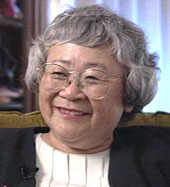
|
Minidoka - destructive impact of camp lifeTo view video, Click Here. Akiko K. recalls the destructive impact of camp life at Minidoka on her family. "The thing I felt most was the lack of privacy, and that there wasn't anyplace you could just go and sit down and reflect. It was just like, hey, … |

|
Tule Lake - reunited with his fatherTo view video, Click Here. Many first-generation men of Japanese ancestry (issei) spent the war years separated from their families. In this video segment Frank F. tells of the bittersweet reunion with his father after three years of separation. "Yeah, I think when the Justice Department okayed his … |

|
Granada - asked if she is "human."To view video, Click Here. Mutsu H. tells her story of talking with a soldier who asked her, "Are you a human being?" while she was incarcerated at Granada. "Amache camp guarded by very young soldiers. One time soldier stop me and, "Hey you." "You want to talk …
Granada - Soldier asking, "Are you a human being?" |
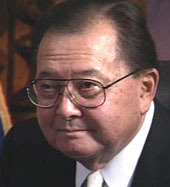
|
Rohwer - Senator Inouye visitsTo view video, Click Here. During World War II, most Hawaiians of Japanese ancestry were unaware of the mass incarceration of mainland Japanese Americans. Japanese American soldiers from Hawaii who came to the mainland for training were shocked to discover the existence of incarceration camps. In this video … |

|
Heart Mountain - Christmas caroling to soldierTo view video, Click Here. Kara K. remembers the unexpected effect her Christmas caroling had on one camp guard. "I was advisor to a high school girls' group called Hijinks, and we went out caroling. And we went to the, to the guard towers where people were, the …
Heart Mountain - Kara K describes Christmas caroling |
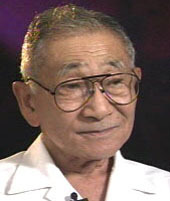
|
Poston - unbearable heatTo view video, Click Here. Rudy T. describes suffering through the unbearable heat at Poston. "And the day we got to Parker, Arizona, 114 degrees. And later on, as I thought about all this that happened the day we got there, people were fainting like flies, because none … |
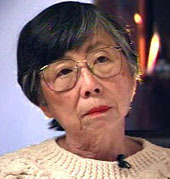
|
Jerome - harsh living conditionsTo view video, Click Here. Sarah S. describes the harsh living conditions and lack of privacy at Jerome. "When we went to Jerome, our barracks were not finished. When I say finished, you know, they just have the outside wall, the inside was all just unfinished. The winds … |
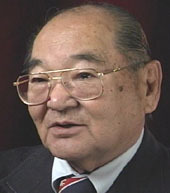
|
Manzanar - first impressionsTo view video, Click Here. Paul B. discusses his first impressions of Manzanar and the struggle to remain positive in a bleak situation. "When I went there my folks were already there. And these barracks -- I think there were four rooms, and we had one of them. … |

|
Topaz - severe dust stormsTo view video, Click Here. Mitsue M. talks about the severe dust storms and barren landscape of Topaz. "It was out in the Sevier Desert with all the dust storms, you name it, cold in winter... the road was impassable, you get mud all over your feet and … |
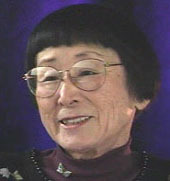
|
Gila River - insects and dust in barracksTo view video, Click Here. Kay M. shares her memories of Gila River and getting used to the insects and dust in her barrack. "Well there was, Camp One and Camp Two were similar. I mean, they were all barracks you know. Black tar paper on the wall, … |
 densho
densho
 Voices from the Camps
Voices from the Camps
 Journal feed
Journal feed
